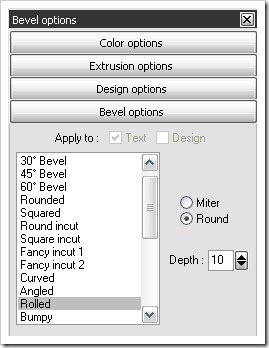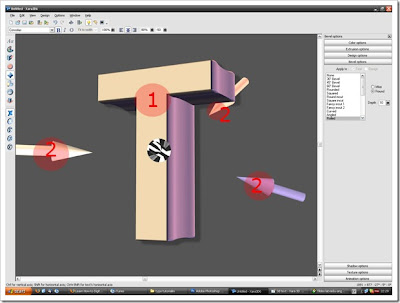Ah can denote positive emotions like relief or delight (generally, pronounced with a long a).
Aha signals triumph or surprise, or perhaps derision.
Ack communicates disgust or dismissal.
Ah can denote positive emotions like relief or delight (generally, pronounced with a long a).
Aha signals triumph or surprise, or perhaps derision.
Ahem is employed to gain attention.
Argh, often drawn out with additional h’s, is all about frustration.
Aw can be dismissive or indicative of disappointment, or, when drawn out, expressive of sympathy or adoration.
Aye denotes agreement.
Bah is dismissive.
Blah communicates boredom or disappointment.
Blech (or bleah or bleh) implies nausea.
Boo is an exclamation to provoke fright.
Boo-hoo is imitative of crying and is derisive.
Boo-ya (with several spelling variants) is a cry of triumph.
Bwah-hah-hah (variously spelled, including mwah-hah-hah) facetiously mimics the stereotypical archvillain’s triumphant laugh.
D’oh is the spelling for the muttering accompanying Homer Simpson’s trademark head-slapping self-abuse.
Duh derides someone who seems dense.
Eek indicates an unpleasant surprise.
Eh, with a question mark, is a request for repetition or confirmation of what was just said; without, it is dismissive.
Er (sometimes erm) plays for time.
Ew denotes disgust, intensified by the addition of one or more e’s and/or w’s.
Feh (and its cousin meh) is an indication of feeling underwhelmed or disappointed.
Gak is an expression of disgust or distaste.
Ha expresses joy or surprise, or perhaps triumph.
Ha-ha (with possible redoubling) communicates laughter or derision.
Hamana-hamana, variously spelled, and duplicated as needed, implies speechless embarrassment.
Hardy-har-har, or har-har repeated as needed, communicates mock amusement.
Hee-hee is a mischievous laugh, while its variants heh and heh-heh (and so on) can have a more derisive connotation.
Hey can express surprise or exultation, or can be used to request repetition or call for attention.
Hist signals the desire for silence.
Hm, extended as needed, suggests curiosity, confusion, consternation, or skepticism.
Hmph (also hrmph or humph) indicates displeasure or indignation.
Ho-ho is expressive of mirth, or (along with its variant oh-ho) can indicate triumph of discovery.
Ho-hum signals indifference or boredom.
Hubba-hubba is the vocal equivalent of a leer.
Huh (or hunh) is a sign of disbelief, confusion, or surprise, or, with a question mark, is a request for repetition.
Hup, from the sound-off a military cadence chant, signals beginning an exerting task.
Hurrah (also hoorah, hooray, and hurray, and even huzzah) is an exclamation of triumph or happiness.
Ick signals disgust.
Lah-de-dah denotes nonchalance or dismissal, or derision about pretension.
Mm-hmm, variously spelled, is an affirmative or corroborating response.
Mmm, extended as needed, conveys palatable or palpable pleasure.
Mwah is suggestive of a kiss, often implying unctuous or exaggerated affection.
Neener-neener, often uttered in a series of three repetitions, is a taunt.
Now (often repeated “Now, now”) is uttered as an admonition.
Oh is among the most versatile of interjections. Use it to indicate comprehension or acknowledgment (or, with a question mark, a request for verification), to preface direct address (“Oh, sir!”), as a sign of approximation or example (“Oh, about three days”), or to express emotion or serves as a response to a pain or pleasure. (Ooh is a variant useful for the last two purposes.)
Oh-oh (or alternatives in which oh is followed by various words) is a warning response to something that will have negative repercussions.
Olé, with an accent mark over the e, is borrowed from Spanish and is a vocal flourish to celebrate a deft or adroit maneuver.
Ooh, with o’s repeated as needed, conveys interest or admiration, or, alternatively, disdain.
Ooh-la-la is a response to an attempt to impress or gently mocks pretension or finery.
Oops (and the jocular diminutive variation oopsie or oopsy and the variant whoops) calls attention to an error or fault.
Ouch (or ow, extended as needed) signals pain or is a response to a harsh word or action.
Oy, part of Yiddish expressions such as oy gevalt (equivalent to “Uh-oh”), is a lament of frustration, concern, or self-pity.
Pff, extended as needed, expresses disappointment, disdain, or annoyance.
Pfft, or phfft, communicates abrupt ending or departure or is a sardonic dismissal akin to pff.
Phew, or pew, communicates disgust, fatigue, or relief. (Phooey, also spelled pfui, is a signal for disgust, too, and can denote dismissal as well. PU and P.U. are also variants.)
Poof is imitative of a sudden disappearance, as if by magic.
Pooh is a contemptuous exclamation.
Pshaw denotes disbelief, disapproval, or irritation or, alternatively, communicates facetious self-consciousness.
Psst calls for quiet.
Rah, perhaps repeated, signals triumph.
Shh (extended as necessary) is an imperative for silence.
Sis boom bah is an outdated encouraging cry, most likely to be used mockingly now.
Tchah communicates annoyance.
Tsk-tsk and its even snootier variant tut-tut are condemnations or scoldings; the related sound tch is the teeth-and-tongue click of disapproval.
Ugh is an exclamation of disgust.
Uh is an expression of skepticism or a delaying tactic.
Uh-huh indicates affirmation or agreement.
Uh-oh signals concern or dismay.
Uh-uh is the sound of negation or refusal.
Um is a placeholder for a pause but also denotes skepticism.
Va-va-voom is an old-fashioned exclamation denoting admiration of physical attractiveness.
Whee is an exclamation of excitement or delight.
Whew is a variant of phew but can also express amazement.
Whoa is a call to halt or an exclamation of surprise or relief.
Whoop-de-doo and its many variants convey mocking reaction to something meant to impress.
Woo and woo-hoo (and variations like yahoo, yee-haw, and yippee) indicate excitement. (Woot, also spelled w00t among an online in-crowd, is a probably ephemeral variant.)
Wow expresses surprise.
Yay is a congratulatory exclamation. (Not to be confused with yeah, a variant of yes.)
Yikes is an expression of fear or concern, often used facetiously.
Yo-ho-ho is the traditional pirates’ refrain.
Yoo-hoo attracts attention.
Yow, or yowza, is an exclamation of surprise or conveys being impressed.
Yuck (also spelled yech or yecch) signals disgust. (Not to be confused with yuk, a laugh.)
Yum, or yummy, is a response to the taste of something delicious and, by extension, the sight of an attractive person.
Zoinks is an expression of surprise or amazement popularized by the cartoon character Shaggy, of Scooby Doo fame.
Zowie, often in combination following wowie, a variant of wow, expresses admiration or astonishment. is employed to gain attention. How to use:
How to use:
 We can basically distinguish memory areas that are available for all threads in a JVM and those memory areas that are exclusively accessible from only one thread. The two areas that are available from all threads are the Method Area and the Heap.
We can basically distinguish memory areas that are available for all threads in a JVM and those memory areas that are exclusively accessible from only one thread. The two areas that are available from all threads are the Method Area and the Heap.

 1.2. Now we will change text a little bit -
1.2. Now we will change text a little bit - 1.3.
1.3. 1.4. Okay, now we will play with lightning and 3D effects.
1.4. Okay, now we will play with lightning and 3D effects. 1.5.Okay, We are done in XARA, now let’s export text to Photoshop:
1.5.Okay, We are done in XARA, now let’s export text to Photoshop: Do this with every letter, change 3D effects, maybe colors – play with options until You are satisfied. I got 4 png files at the end, one for every letter – T,Y,P,E.
Do this with every letter, change 3D effects, maybe colors – play with options until You are satisfied. I got 4 png files at the end, one for every letter – T,Y,P,E.